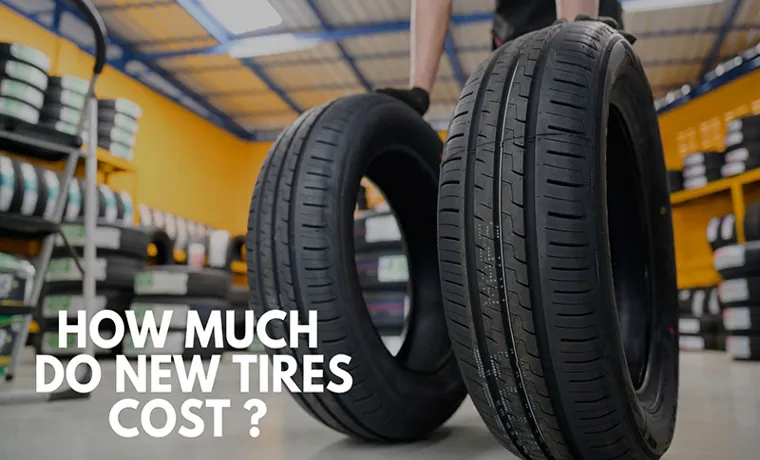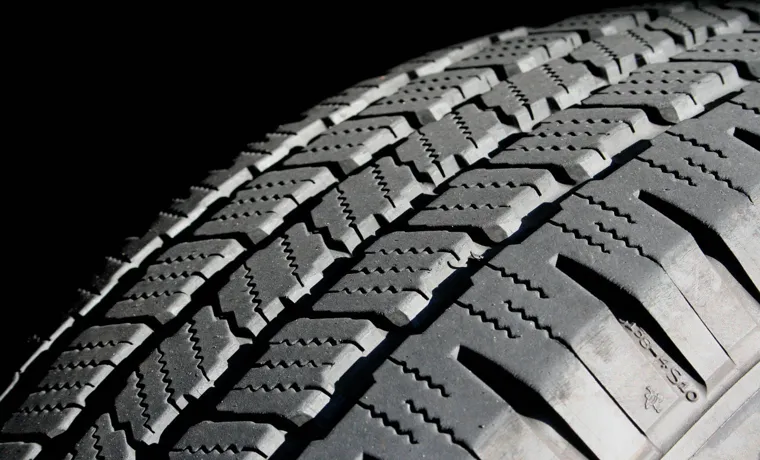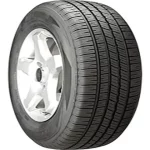Retreading Tires: Is it a cost-effective solution? Many drivers are unaware of the alternative methods of fixing their worn-out tires once they have reached the end of their life cycle on the road. Retreading tires can provide an eco-friendly and cost-effective solution that is beneficial to both the environment and your wallet. In this blog post, we will explore the process of retreading tires, the savings it can bring, the safety concerns, and the benefits to our planet.
Weighing the options of purchasing new vs retreaded tires can be a dilemma for car owners, but if you are willing to consider the costs vs benefits, you might just realize that retreading those tires is well worth the time and financial investment! So, let’s dive deep and explore the world of retreading tires!
Table of Contents
Introduction
Have you ever wondered how much it costs to retread a tire? Well, the answer to that question depends on a few different factors. The size of the tire, the type of tire, and the location of the retread center can all impact the cost of retreading. On average, the cost to retread a tire can range from $40 to $100 per tire.
While this might seem expensive, it is often more cost-effective than purchasing a new tire. Additionally, retreading tires is an eco-friendly and sustainable option as it reduces waste and saves energy. So, next time you need new tires, consider retreading your old ones instead.
What is tire retreading? Why is it done?
Tire retreading refers to the process of renewing old or worn-out tires by replacing the worn-out tread with new rubber. This method is an eco-friendly alternative to buying new tires as it reduces the amount of rubber that goes to waste. Retreading is commonly used in the trucking industry and is becoming more popular in the passenger car sector.
The process of retreading involves removing the worn-out tread, inspecting the tire for damage, and conditioning the casing. Once the casing passes the inspection, a new tread is bonded to the casing through a process called vulcanization. The result is a tire that has been given a second life, and is as safe, reliable, and durable as a brand new one.
Retreaded tires offer substantial savings, reduce waste, provide the same level of performance, and are environmentally friendly.

Factors Affecting Cost of Retreading
Retreading is an affordable way to extend the lifespan of your tires, but the cost can vary depending on a few factors. One of the biggest factors is the size and type of tire you are retreading. Larger tires and those designed for heavy-duty vehicles often cost more to retread since they require more material and labor.
Another factor is the level of damage to the tire. If there is more wear and tear or damage to the tire, it may require additional repairs before it can be retread. The quality of materials used in the retreading process can also impact the cost.
Premium materials can cost more but may result in a longer-lasting retread. Overall, the cost to retread a tire can range from around $50 to $200 depending on these factors. Overall, retreading is still more affordable than purchasing a new tire, making it a popular choice for many vehicle owners looking to save money.
Tire size, type, and tread depth
Retreading tires can be a cost-effective alternative to buying brand new ones, but the price can vary depending on several factors. One of the most significant factors is the size of the tire. Larger tires will require more materials and labor, which will increase the cost of the retreading process.
Additionally, the type of tire can affect the cost. Certain tire types are more difficult to retread than others, requiring special equipment and techniques, which can drive up the price. Finally, the tread depth of the tire is also a significant factor.
Tires with shallow treads can be easier and quicker to retread, making them less expensive than tires with deep treads. Overall, these factors can all impact the cost of retreading, so it is essential to consider them when deciding whether to invest in retreaded tires. By taking into account the size, type, and tread depth of the tire, you can get a better idea of how much it will cost to retread, allowing you to make an informed decision.
Tire condition and damage
When it comes to determining the cost of retreading a tire, several factors come into play. The condition and damage of the tire are two significant factors. The tread depth and the number of times a tire has been retreaded also affect its cost.
Tires with excessive wear and tear or irreparable damage might not be suitable for retreading, making them more expensive to replace. On the other hand, a tire in good condition with minimal damage can be retreaded, reducing the overall cost of tire replacement. Additionally, if a tire has been retreaded several times, it may need to be replaced entirely, causing an increase in costs.
It’s crucial to have regular maintenance check-ups for your tires to ensure they are in good condition, which can help in saving money in the long run. Overall, proper tire maintenance is essential for extending the life of your tire and reducing the costs of replacing them.
Retreading process and materials used
Retreading can be a cost-effective alternative to replacing old or worn-out tires. However, the cost of retreading can vary depending on several factors. For example, the cost is influenced by the quality and type of the materials used in the retreading process.
High-quality materials such as rubber compounds and tread designs can result in a more durable and long-lasting retreaded tire, but the cost may be higher. On the other hand, using cheaper or lower-quality materials can lower the cost of retreading but may result in lower quality or shorter lifespan. Furthermore, the cost of retreading can also be affected by the level of technology and equipment used in the retreading process.
Sophisticated equipment and technology can result in more efficient and accurate retreading, but the cost of using such equipment may be higher. Ultimately, when considering the cost of retreading, it’s essential to take into account the balance between cost, quality, and durability to get the best value for your money.
Retread Cost: Average Prices
If you’re wondering how much it costs to retread a tire, the average price can vary depending on a few factors. Typically, retreading a tire can save you money compared to buying a new tire. The cost of retreading starts at around $30 per tire and can go up to $75 or more depending on the size and type of tire.
The price can also vary depending on the retreading process used, such as precured or mold-cure retreading. It’s best to consult with a professional tire dealer to get an accurate estimate for your specific tire needs. Ultimately, retreading can be a cost-effective solution for extending the life of your tires and keeping your vehicle on the road for a longer period.
You’ll get more value out of your tires than simply disposing of them and purchasing new ones. Plus, it’s an eco-friendly option that helps reduce waste and carbon footprint.
Passenger and light truck tires
When it comes to buying new tires, the cost can be overwhelming. That’s why it’s good to know that you have options when it comes to purchasing tires for your vehicle. One option that is becoming more popular is retreading.
Retread tires are a great way to save money and reduce waste. The average cost of retreading passenger and light truck tires is around $100 to $150 per tire. This cost can vary depending on the tire size and tread design.
However, it’s important to note that while the initial price may be lower, retread tires may not last as long as a new tire. It’s always best to do your research and consult with a trusted tire professional before making a decision. Overall, retread tires can be a cost-effective option for those looking to save money on their tires.
Commercial truck and bus tires
Looking to save money on commercial truck and bus tires? A popular option is tire retreading. This cost-effective alternative to purchasing new tires involves replacing the worn tread with new rubber. While pricing can vary depending on the size and type of tire, the average cost for a retread tire ranges from $150-$250.
Keep in mind that while retread tires may be a budget-friendly choice, they do require more frequent inspections and maintenance to ensure their safety and durability. It’s also important to purchase retread tires from a reputable dealer who follows strict industry standards for quality and safety. If you’re in the market for new commercial tires but want to save some money, consider retread tires as a viable option.
Off-road and specialty tires
When it comes to off-road and specialty tires, retreading is a popular way to extend their lifespan and save money. The average cost of retreading varies depending on factors such as tire size and type, but generally ranges from $100 to $300 per tire. However, it’s important to remember that while retreading may be a cost-effective option, it’s not suitable for all tires and conditions.
It’s essential to consult with a professional and ensure that the tire is in good condition and suitable for retreading before proceeding. Additionally, the quality of the retread can vary, so it’s important to ensure that the retread is from a reputable source and meets all safety standards. Keywords: Off-road, Specialty tires, Retreading, Cost.
Benefits of Retreading Tires
One of the biggest benefits of retreading tires is the ability to save money. The cost to retread a tire is significantly less than buying a brand new tire. In fact, depending on the type and size of the tire, retreading can cost as little as half the price of a new tire.
This is especially important for those who need to replace multiple tires at once. Not only does retreading save money, but it is also an eco-friendly option. Retreading tires reduces waste by extending the life of the tire and using fewer resources to create a new tire.
Additionally, retreaded tires are just as safe and reliable as new tires. Retreading allows the existing tire to be reinforced and given new tread, making it just as durable and effective as a new tire. So, if you’re looking to save money and reduce your environmental impact, retreading your tires may be the perfect choice.
Cost savings compared to new tires
Retreading tires can be an excellent way to save money compared to purchasing new tires. Retreading is a process in which a worn tire is restored to like-new condition by replacing the tread with new rubber. The benefits of retreading tires go beyond just cost savings, though.
Retreaded tires are environmentally friendly because they help reduce waste by reusing old tires. Additionally, retreaded tires perform just as well as new tires and have a long lifespan if maintained properly. Retreading also helps maintain a steady supply of affordable but quality tires in the market.
Retreading tires are an excellent option for businesses and individuals alike who want to get the most out of their tires while still saving money.
Reduced environmental impact
Retreading tires is a process of reusing the existing tire casing and replacing the worn-out tread with a new one. The process of retreading has numerous benefits, and one of the most significant is reduced environmental impact. Retreading tires helps to reduce waste by extending the lifespan of a tire, which reduces the number of tires that end up in landfills.
By conserving rubber and other resources used in the manufacturing of new tires, retreading helps to reduce energy consumption, decrease emissions, and conserve natural resources. This makes retreading an eco-friendlier and cost-effective alternative to buying brand new tires. The next time you’re in the market for new tires, consider retreading them instead.
Not only will you be doing your part for the environment, but you’ll also save money and keep your vehicle safe and roadworthy.
Equal or better performance than new tires
When it comes to tire maintenance, many fleet owners debate whether to buy new tires or opt for retreading. One of the main benefits of retreading tires is the equal or better performance than new tires. Retreading a tire involves replacing the worn tread with a new layer of rubber, leaving the casing intact.
This process increases the lifespan of the tire and its performance, as the casing has already been broken in and hardened. Retreaded tires also offer a lower cost per mile than new tires, making them a cost-effective alternative. Plus, with advances in retreading technology, the quality and safety of retreads have improved greatly.
In fact, many retreaded tires can exceed the performance of a new tire. So, if you’re looking for a way to cut your tire costs without sacrificing performance or safety, retreading might be the way to go.
Conclusion
In conclusion, the cost of retreading a tire may vary depending on various factors such as the type of tire, size, and tread pattern. However, it’s worth mentioning that retreading a tire can save you a substantial amount of money compared to purchasing new ones. So, the next time you’re in the market for a new set of tires, consider giving retreading a chance- it’s budget-friendly, eco-friendly, and can help you get more out of your tires! After all, when it comes to saving money, every penny counts.
FAQs
What is tire retreading?
Tire retreading is the process of repairing an old tire by adding new tread to its worn-out surface.
Why should I consider getting my tire retreaded?
Retreading can extend the life of your tire, while also being more cost-effective and environmentally friendly compared to buying a new tire.
How much can I save by retreading my tire instead of buying a new one?
The cost of retreading a tire can vary depending on the type of tire and the extent of the damage, but it is generally much cheaper than buying a brand new tire, allowing drivers to potentially save hundreds of dollars.
What are the safety concerns of using a retreaded tire?
Retreaded tires have been tested to ensure their safety and are approved by government regulations. However, it is important to follow proper maintenance and usage guidelines to ensure their continued safety.
Can all tires be retreaded?
Not all tires can be retreaded, as some may be too damaged or worn out. It is important to have a professional evaluate the condition of your tire to determine if it is eligible for retreading.
How long does the retreading process typically take?
The retreading process can take several hours to a few days depending on the service provider and the extent of the repairs needed.
Will retreading affect my tire’s performance or handling?
Retreading should not significantly affect the performance or handling of your tire, as long as it is done correctly and you follow proper maintenance and usage guidelines.



